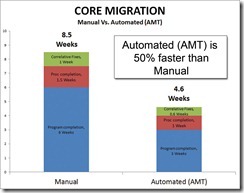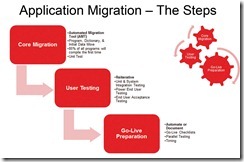Useful Tips on Migrating from Legacy PICK
Recognize When to Commit to Migrating
Your system sends up certain red flags when its performance has degraded. These signals might include missing your maintenance windows, users complaining about slow system response times, or unreasonably high system maintenance fees. Perhaps your customers are saying the application needs modernization, but the programming backlog is six (6) months and growing. How do you solve these problems? Replace your legacy PICK system! This article will share the best practices that Rocket U2 has learned through years of experience.
You might be hesitant to undertake a migration. Are you worried about the cost or afraid to commit the time? How can you know how long a migration might take? You might be comparing the amount of suffering your current system is causing versus the pain you might experience while migrating to a new system. You are not alone. Many in the legacy Pick community are facing these pains and questions. Read on to learn about the steps in the migration process, and to get some tips that will help you along the way.
Take Inventory of Your Current System and Write Down a Wish List for the Future System
A successful migration starts with good planning. Collect information about your IT department in order to assess resources and set realistic timelines. Gather a description of IT department personnel; record their experience level and area of expertise. Inventory your current hardware platform; list all system configurations, printers, and communications devices so that you will be aware of the hardware you can reuse or need to purchase for your new system. Remember to document all third party software being used with your system and research if that third party still supports and markets the software. If that third party software is no longer supported, now would be an excellent time to consider an improved replacement or "workaround" for that software!
After recording your existing setup, envision your ultimate wish list for software and hardware enhancements for the new platform. Don't be shy, aim high. You are no longer going to be restricted by an antiquated system! This transition gives you an opportunity to address long needed requirements, such as compliance, High Availability, and software or network modernization.
Next identify the number of program files, PROCS, PARAGRAPHS, data files and dictionary files that are currently being utilized. Although you might find this the most tedious stage described so far - shouldn't you really be aware of this level of detail about your current system?
Keep It Clean and Neat and Practice Makes Perfect
Clean house by tidying up your application. Sign up your users to be testers during the migration process, and manage expectations during the "Go-Live". Be sure to emphasize to the people testing the system that they will be held accountable for ensuring everything works properly in the new environment.
Make clear and concise documentation. Craft a checklist and assign each task to the proper resource. Carefully describe each step so that your staff can reference this documentation at each stage of the process. Rehearse your "Go-Live" as many times as possible, to uncover any issues that might arise before implementation and develop a workaround or resolution to each prior to the "Go-Live" date.
How Long Does the Migration Process Take? How Can I Make It Go More Smoothly?
A typical migration involves a thirteen (13) to sixteen (16) week effort for applications with 2,000 programs, 500 PROCS and about 1,500 data files and dictionaries. The migration is done in stages: the conversion of programs, "Unit Testing" by the technical staff, user testing, pre and post "Go-Live" testing/support, and fixes/workarounds.
Choosing the right target platform is your most important decision. You want to preserve your company's investment in business logic, while having minimal impact on your users and production environment. The U2 databases offer the most in terms of compatibility, price, performance, selection of tools for application modernization and more.
With the U2 Migration Factory, Rocket Software facilitates the migration process, allowing it to be as painless and seamless as possible. Rocket U2 has the leading truly MultiValue databases in the industry and has completed over 1,000 migrations worldwide. A free trial migration can be performed as a Proof of Concept (POC) to guide the customer in the planning and conversion stages of the migration process. Rocket U2's Automated Migration Tool results in a 50% faster Core Migration Process than performing a manual process. This time savings has been proven by performing similarly-sized migrations with and without using the tool.
If you are on old hardware, the clock is ticking. If your legacy system has the business logic you need but is lacking in performance or appearance, a migration can open the door to using modern technology to solve these issues. Following the steps outlined above, you can achieve a successful migration to a more modern database and open the door to a brighter, longer future.



